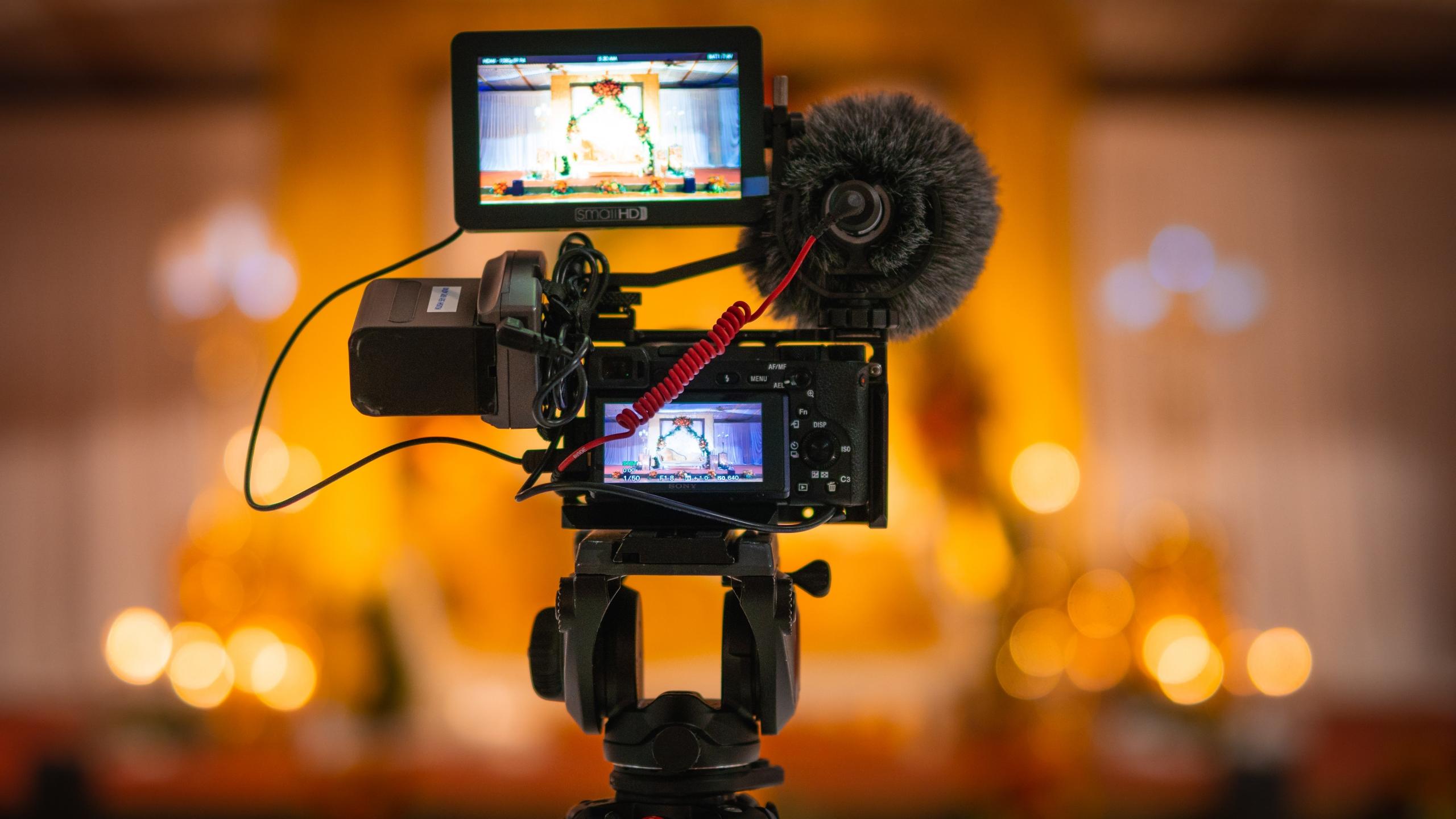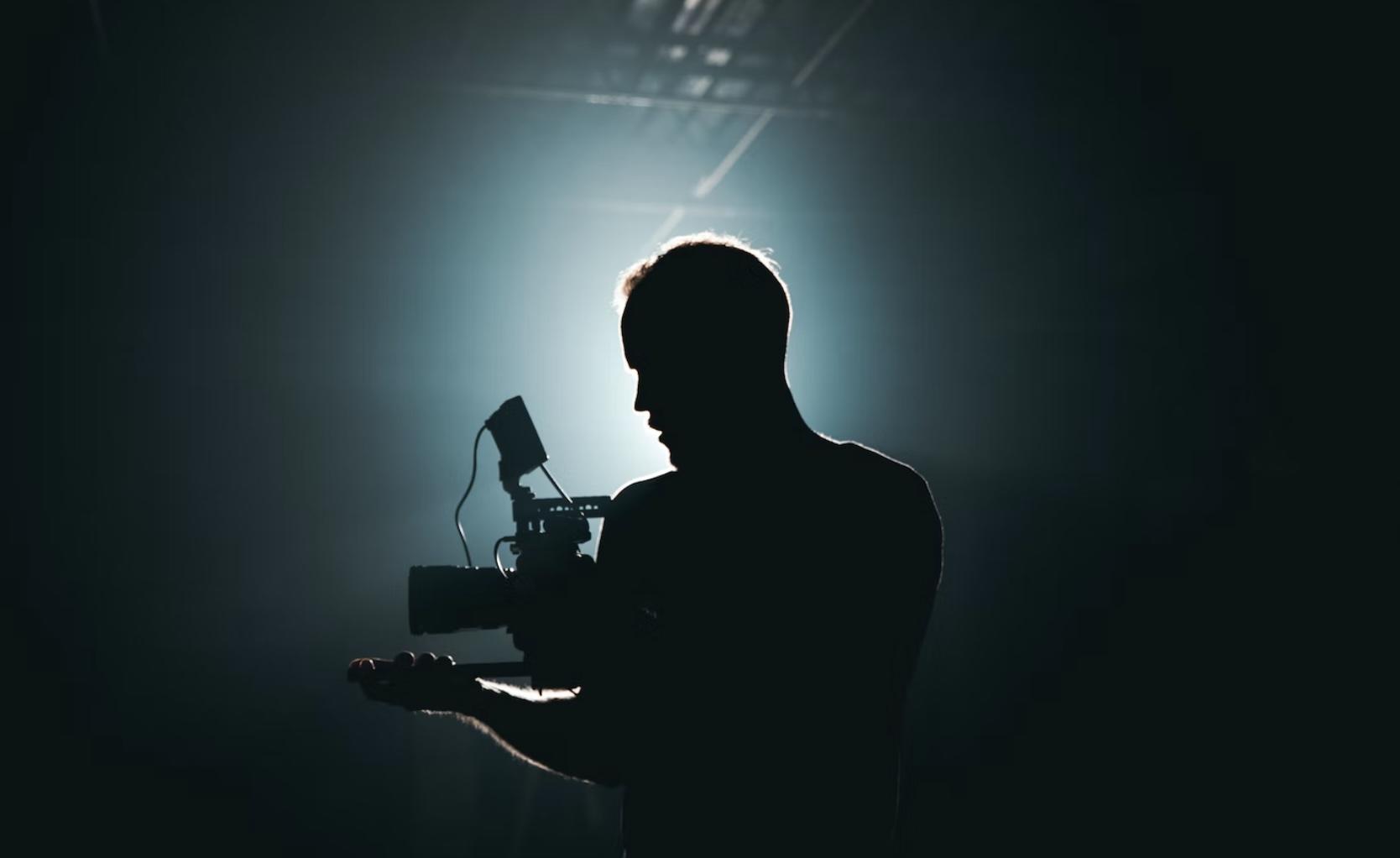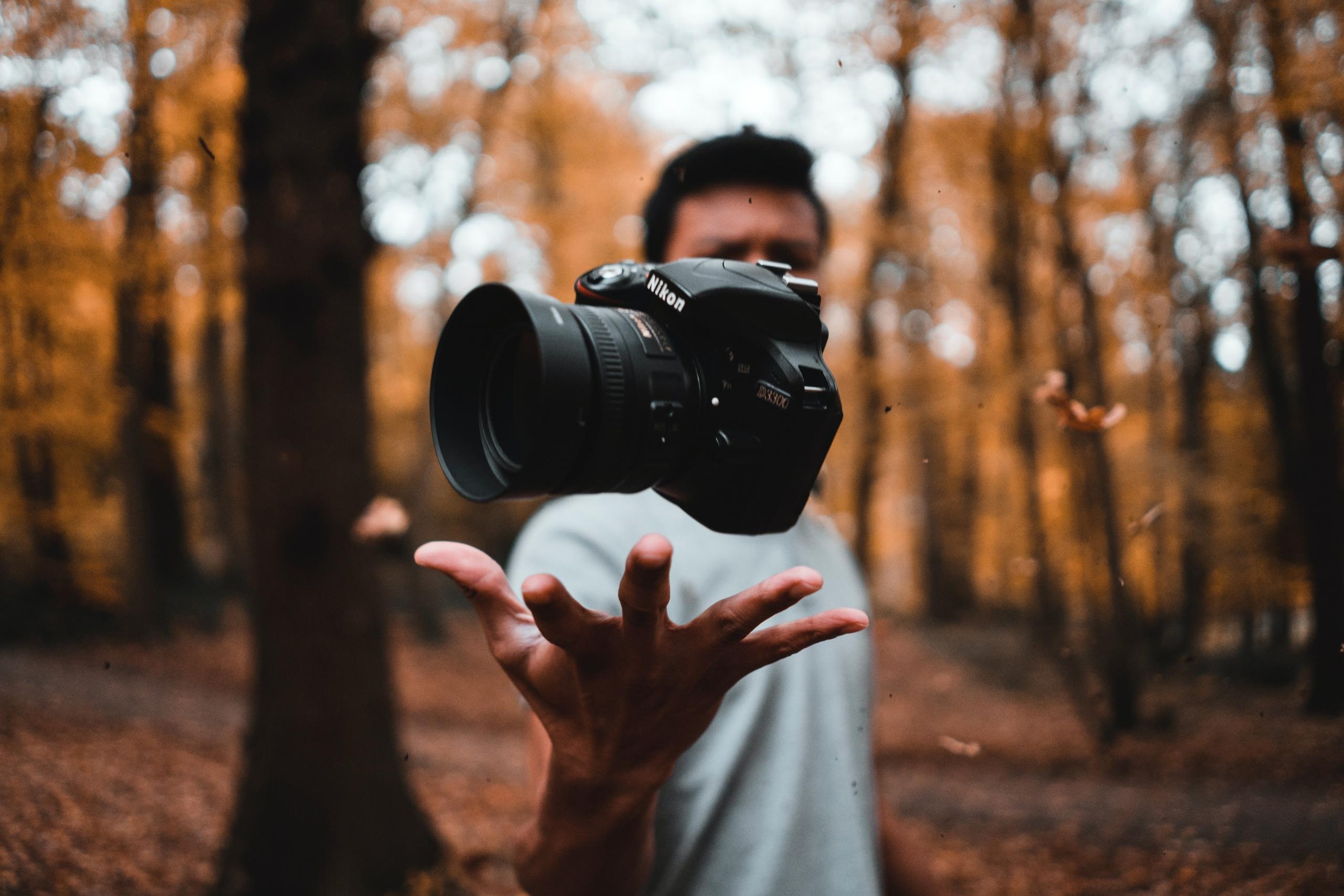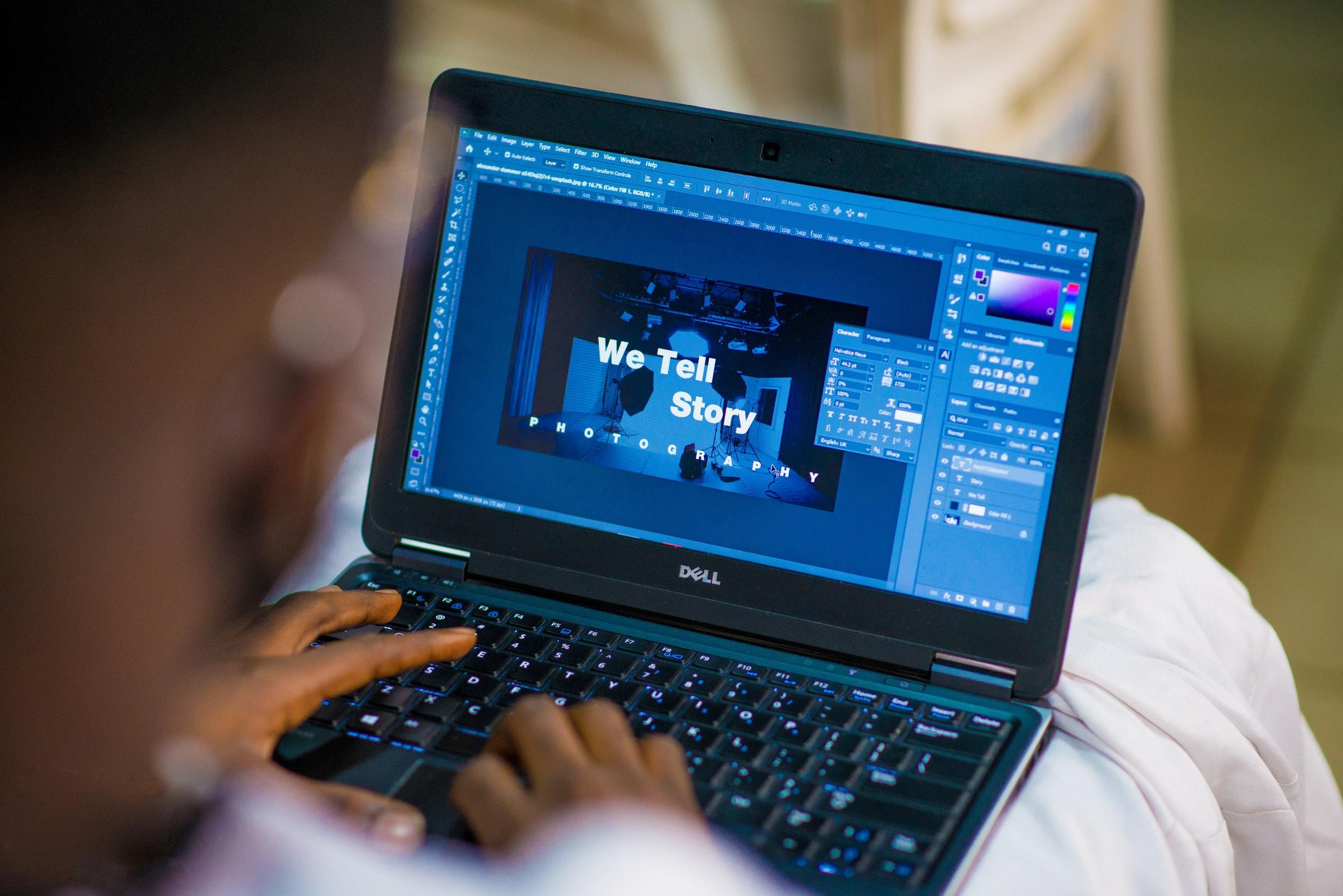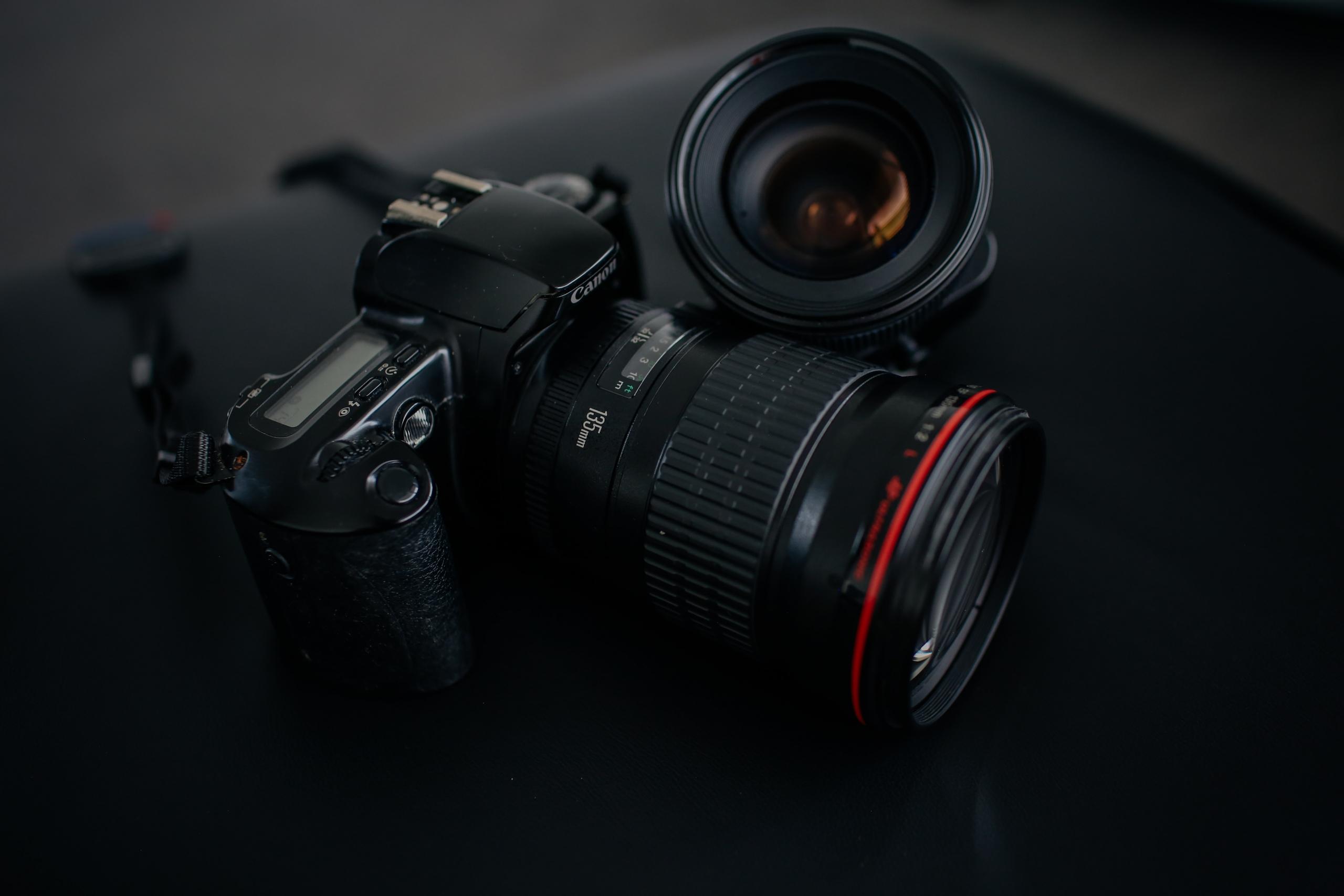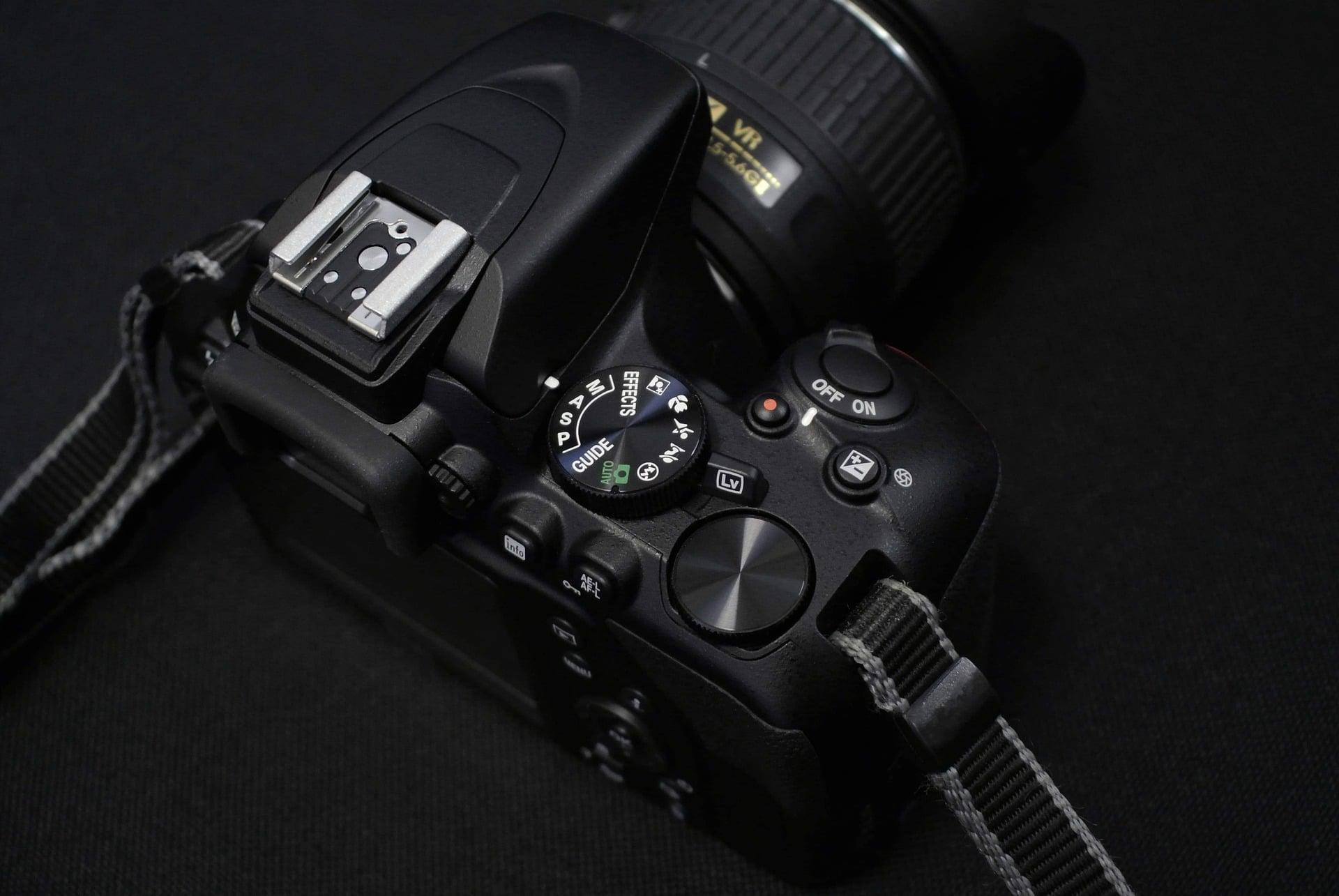If you’re an aspiring videographer or filmmaker, then you’ll know how much of an impact the right equipment can have on the footage.
It can be a tough profession to get into since there’s a technical learning curve with all of the cameras and shooting rigs associated with capturing moving images.
Cameras are only one piece of equipment too, videographers also need to understand different types of filters and have a solid grasp of lighting if they are to produce the highest quality content.
Regardless of how difficult it might be, it’s a fascinating and rewarding field to get into.
Before you get started, it’s not a bad idea to look into tutorship. With Superprof, you can find a photography tutor to show you the ropes and help you get started on the right foot.
In this guide, we’re going to provide you with some of our equipment recommendations to get you started on your journey to filmmaking success.


How to use Lighting for an Interview Shooting
Whether you’re conducting an interview with someone you found on the street, or you’re going deep with someone you trust, lighting is everything.
An interview shot in poor lighting, no matter how compelling it might be, will scare off a lot of potential viewers.
This is especially true if you’re trying to build an online presence for yourself and set yourself apart from the myriad other videographers trying to make a career for themselves on online video sharing platforms.
Plus, if your lighting is spot on, you can get away with having a less expensive camera.
So what are your best options for lighting in an interview?
3-point Lighting
3-point lighting is a well-known phrase in the film and photography industries.
It refers to the use of three lights to illuminate a scene. It involves a key, fill, and backlight.
The key light is the most prominent of the three lights, which means it will be the brightest light source. In some cases, it isn’t even a light fixture or lamp but the sunlight coming through the window that can be used as a key light to illuminate the subject. Though this of course assumes the light will be consistent, otherwise you’ll be dealing with the fluctuating light levels when the sun disappears behind clouds and reappears.
Then you have the fill light, which, true to its name, fills in the spaces that the key light can’t reach. It isn’t quite as bright as the main key light, but it can provide extra details on your interviewee’s face.
Finally, the backlight is what you’ll need to place behind the interviewee to illuminate their head and hairline.
There are many more considerations when it comes to interviewing lighting though, such as whether you want to use hard or soft lighting, how to best diffuse or bounce the light, and how the light interacts with your camera.
The 5 Best Filmmaking Cameras under £2000
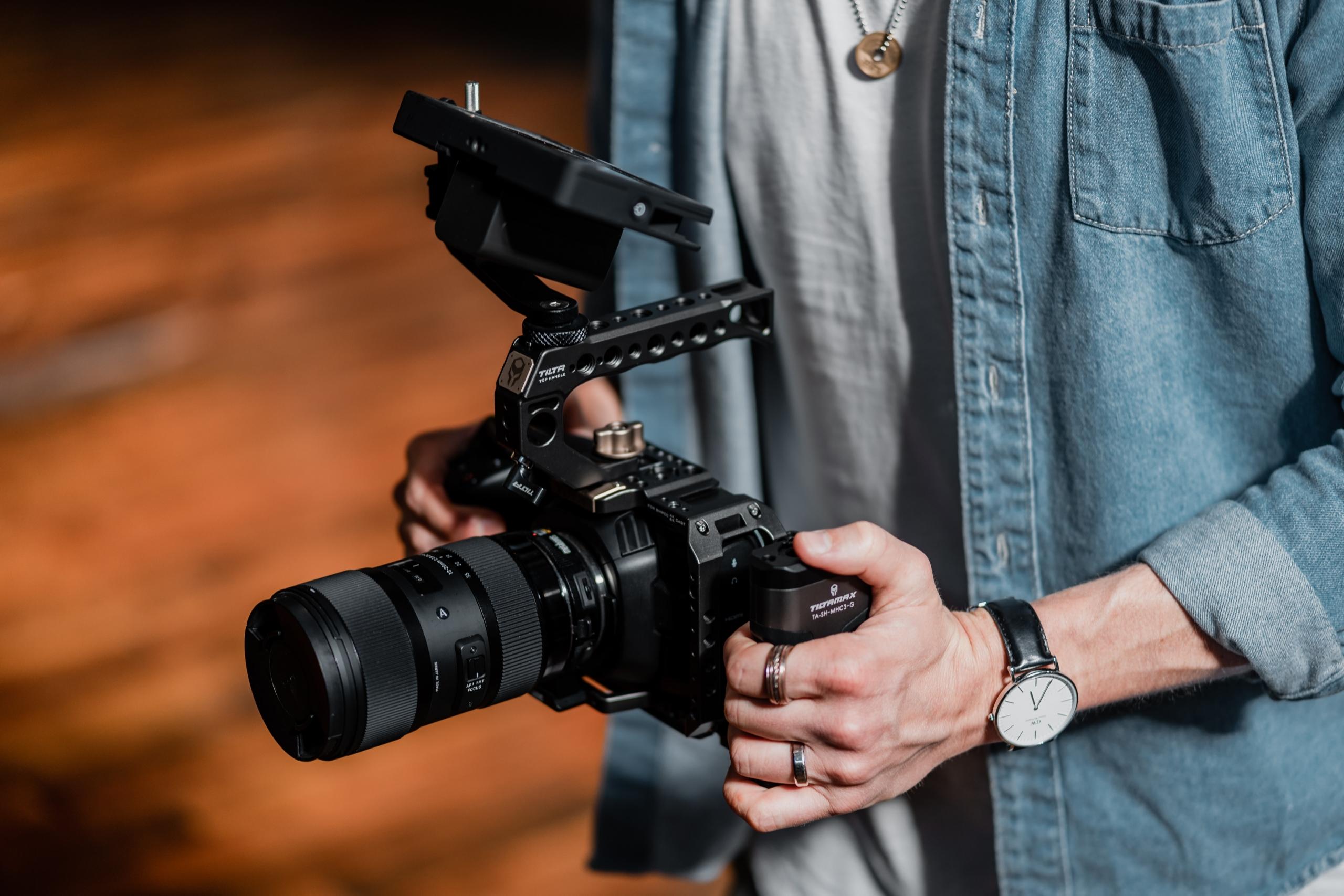
If your hands are tied and you have a strict budget of £2,000 or less, then you’ll be pleased to know that you can still get your hands on an excellent filmmaking camera.
But what is it that makes a filmmaking camera worth the investment?
- Resolution
If you want high-quality video, then you have to pay attention to the resolution your camera can record in.
For videography, it’s unlikely that you’ll be satisfied with anything less than 1080p full HD. Ideally though for this price range we’re looking at, you’ll want to be looking at 4K cameras. While 8K is becoming more prominent, you’ll be hard-pressed to find a camera that shoots in this resolution for less than £2,000.
It isn’t only the resolution that determines the overall presentation of the video footage, though, as the frame rate plays an equally important part.
- Frame Rate
Frame rate refers to how many frames the camera records every second. Generally speaking, 60FPS is considered the gold standard for most videography, as this will provide you with smooth footage.
As such, a camera that can record at a resolution of 4K and at 60FPS is a steal in this price range. More common, though, you’ll find cameras with 4K resolution that shoot at 30FPS.
- Other Features
There are many other features to take into account when choosing a video camera for less than £2,000.
For example, autofocus plays an important role in how the footage will look, as it helps to reduce blur caused by your hand shaking as you record. Then there’s dynamic range, which refers to your camera’s low light performance and whether or not it’s capable of recording with clarity even when the sun goes down.
The audio performance of your camera should be a consideration, too, since if you want to record interviews your audience will value crisp sound.
While a lot of filmmaking cameras have eyewatering price tags, there is a market for more affordable cameras for shooting professional-quality videos.
The following cameras perfectly fit that bill:
Sony Alpha a7C
The Sony Alpha a7C is a top-quality camera with a full-frame sensor and allows you to shoot at 1080p with 120fps or 4K in 30fps.
While it’s a shame that you can’t shoot in 4K at the ultra-smooth frame rate of 60FPS, what you can do is shoot in the resolution for as long as you want. Not many cameras can do that in this price range, so you can shoot footage to your heart’s content or until the battery or card fail you.
The image stabilization of this camera is excellent with 5-axis IBIS and it’s compact enough to carry around with you wherever you go.
Canon VIXIA GX10
If you don’t need a camera that can take stills, why not consider a premium camcorder like the Canon VIXIA GX10?
This camcorder is capable of studio-quality video at a reasonable price, giving you UHD 4K video at a seamless 60FPS, so you can shoot whatever you want in high quality.
The Canon VIXIA camcorder also comes with other neat features that make it a sound investment such as Dual-Pixel Autofocus and phase-difference autofocus. These are the kinds of features that will ensure your footage is steady and doesn’t succumb to Blair Witch Projects levels of camera shake.
Nikon Z6
Perhaps the best offering from one of Canon’s closest rivals, the Nikon Z6 FX is a top mirrorless camera that not only takes crisp stills but can also record in 4K UHD in 30p.
This mirrorless camera has quick phase detection autofocus and built-in vibration reduction, which should limit the effects of camera shaking during recording.
Understanding Diffusion Filters
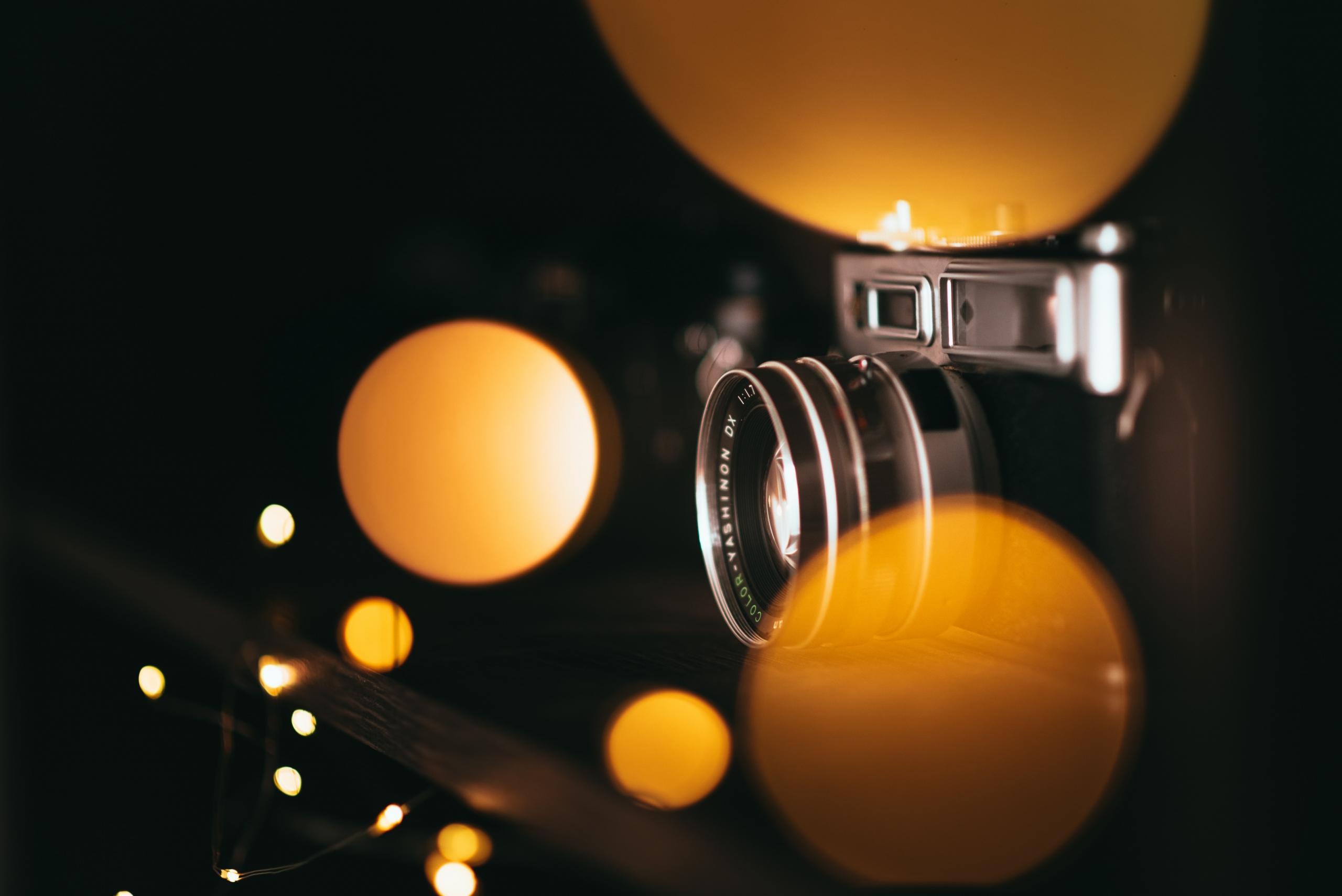
A diffusion filter is a filter you can use while taking photos to soften the image, especially in bright conditions.
There are all kinds of diffusion filters out there, and each one will provide a different lighting effect for your photos. The idea is that these filters will diffuse or disperse the light in various ways so you can create an interesting end result.
One way to think about diffusion filters is as post-processing presets that you use the moment you take the photo. The ring attaches to your camera lens and can give you a cinematic edge to your photos which can help you up to your level of professionalism.
If you’re interested in working in the film industry, or you create vlogs for the internet, learning to use diffusion filters can be a worthwhile endeavour.
Why?
Because they let you take photos that wouldn’t look out of place as stills in a film. As a result, you can capture top-quality images to use video thumbnails or as promotional material for an upcoming video project.
Is a Polarizing Filter Worth It?
A polarizing filter is a special filter that can make a scene brighter or darker, and in some cases get rid of reflections.
It’s a filter that is placed in front of the camera lens and helps the photographer achieve a certain aesthetic with their photos. If, for example, the photographer is at a lake and wants to take pictures without glare from the water’s reflection, then they might use a polarizing filter.
The filter works much the same way as polarized sunglasses or visors do, so if you can imagine why a skier needs to protect their eyes from the glare off the snow then you’ll know why a polarizing filter can be useful in photography.
Who can benefit most from carrying a polarizing lens around in their rucksack?
As mentioned previously, the polarizing filter works best when there’s glare caused by sunlight reflecting off various surfaces like water or snow. As such, it’s best utilised in rural environments and by landscape photographers.
Whenever you feel the need to put your sunglasses on the outside to avoid being blinded by the bright light of the sun, that’s a moment in which a polarizing filter can be useful. This means it can also work wonders in city environments too, preventing reflections off glass surfaces of buildings and cards as well as reducing haze.

